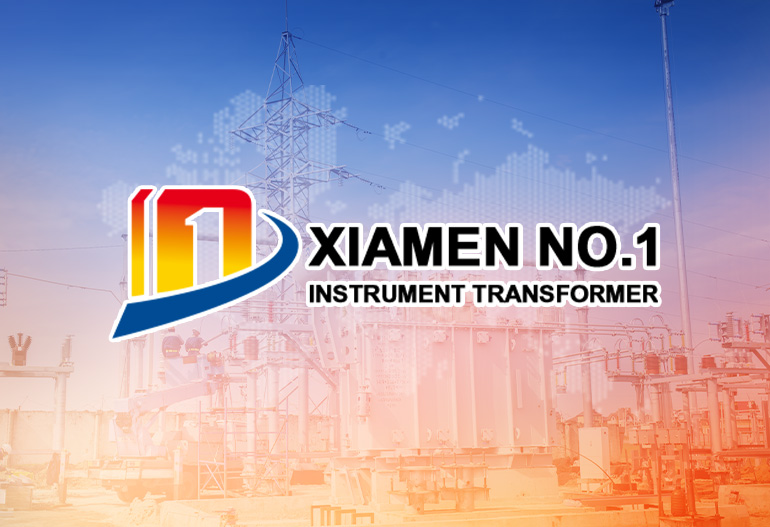
News
Accuracy Considerations for Split Core Current Transformers
1. Introduction
2. Design-Related Accuracy Factors
2.1 Core Material and Magnetic Properties
Material Selection:
Silicon Steel: Ideal for low-frequency applications (50/60 Hz) due to high magnetic permeability and low hysteresis loss. Example: M6 grade silicon steel reduces core losses by 30% compared to low-grade steel.
Ferrite: Suited for higher frequencies (up to 100 kHz) but with lower saturation flux density. Temperature coefficient of ferrite cores (e.g., N87 material) can cause ±0.1%/°C accuracy drift.
Magnetic Saturation: Split cores have higher reluctance than solid cores, increasing the risk of saturation at high primary currents. Designers must maintain a safety margin of 1.5–2x the rated primary current to avoid saturation errors.
2.2 Core Geometry and Hinge Design
Air Gap Impact: The split joint creates an air gap, increasing magnetic reluctance and reducing inductance. A 0.1 mm air gap in a 100A split core CT can introduce 0.5% ratio error.
Hinge Construction: Hinges must ensure minimal misalignment (≤0.05 mm) and consistent clamping force (e.g., 5–10 Nm torque) to minimize magnetic leakage. Examples of hinge designs:
Hinged latch with spring-loaded closure (reduces gap variation by 80%).
Split core with interlocking teeth (improves magnetic flux continuity).
3. Installation-Induced Accuracy Errors
3.1 Core Closure and Alignment
Gap Prevention: Incomplete core closure (e.g., debris or misalignment) creates flux leakage. A 1 mm gap in a 200A CT can cause 1–2% ratio error and 5–10° phase shift.
Mitigation: Use anti-vibration clamps and non-conductive shims to fill minor gaps.
Conductor Positioning: The primary conductor must be centered in the core aperture. Off-center placement (e.g., 5 mm offset in a 50 mm aperture) introduces 0.3–0.5% error.
3.2 Secondary Circuit Loading
Load Impedance: Secondary load (e.g., data logger, cable resistance) must not exceed the CT’s rated burden (e.g., 0.2 Ω for 5A secondary). Exceeding the burden causes:
Ratio error: +0.1% for every 10% overload.
Phase error: +1° for every 20% overload.
Cable Length and Gauge: Use low-resistance cables (e.g., 24 AWG or thicker) and limit length to <10 m for 5A secondary circuits.
4. Environmental and Operational Factors
4.1 Temperature Effects
Thermal Drift: Core material permeability changes with temperature:
Silicon steel: ±0.05%/°C accuracy variation (20–60°C).
Ferrite: ±0.1–0.2%/°C (20–80°C).
Mitigation: Select CTs with temperature-compensated windings or use models rated for the application environment (e.g., -40°C to +85°C for industrial settings).
4.2 Vibration and Mechanical Stress
Vibration Impact: Continuous vibration (e.g., in motor control centers) can loosen core clamps, increasing air gaps. A 10 g vibration at 50 Hz can cause 0.5% accuracy degradation within 1 year.
Solution: Use locknut clamps and anti-vibration mounts (e.g., rubber dampers) to secure CTs.
4.3 Electromagnetic Interference (EMI)
External Fields: Nearby high-current conductors or transformers can induce stray fluxes. A 100A conductor 100 mm from the CT may introduce 0.1–0.3% error.
Shielding: Use mu-metal shields or ferrite sleeves around the CT to attenuate EMI.
5. Calibration and Maintenance for Accuracy
5.1 Calibration Protocols
Factory Calibration: CTs should be calibrated at 25%, 50%, 100%, and 120% of rated current, with accuracy verified against standards (e.g., IEEE C57.13).
On-Site Calibration: Periodic field calibration (annually or every 2 years) using portable calibrators (e.g., Fluke 6105A) to correct for drift.
5.2 Error Compensation Techniques
Software Correction: Implement digital algorithms to compensate for known errors:
Ratio error: Apply a multiplicative factor (e.g., 1.005 for +0.5% error).
Phase error: Adjust timing offsets in data acquisition systems.
Temperature Compensation: Use thermistors embedded in the core to monitor temperature and apply real-time corrections.
6. Accuracy Classes and Standards
| Standard | Accuracy Class | Maximum Ratio Error (%) | Phase Error (minutes) |
|---|---|---|---|
| IEEE C57.13 | 0.5S | ±0.5 at 10–120% rated current | ±30 at 100% current |
| IEC 61869-2 | 0.2 | ±0.2 at 20–120% rated current | ±10 at 100% current |
| ANSI C57.12.20 | 1 | ±1 at 5–120% rated current | ±60 at 100% current |
7. Case Study: Accuracy Improvement in a Industrial Plant
Loose core clamps due to machine vibration.
Secondary cables (20 m long) exceeding the CT’s 0.5 Ω burden.
Replaced standard clamps with spring-loaded vibration-resistant clamps (reduced gap variation to <0.02 mm).
Upgraded to 20 AWG shielded cables and added a signal amplifier (burden reduced to 0.3 Ω).
8. Best Practices for Ensuring Accuracy
Design Selection:
Choose CTs with a minimum 2x overload capacity for peak currents.
Prioritize cores with <0.05 mm specified gap tolerance.
Installation:
Use torque wrenches to achieve consistent clamping force (e.g., 8 Nm for 100A CTs).
Verify conductor centering with alignment guides.
Environmental Control:
Avoid installing CTs near heat sources (e.g., transformers) or high-EMI areas.
Use temperature-rated CTs for harsh environments (e.g., NEMA 4X enclosures).
Ongoing Maintenance:
Perform annual visual inspections for core gaps or corrosion.
Re-calibrate CTs every 2–3 years, or after any mechanical disturbance.
9. Conclusion

XUJIA
I graduated from the University of Electronic Science and Technology, majoring in electric power engineering, proficient in high-voltage and low-voltage power transmission and transformation, smart grid and new energy grid-connected technology applications. With twenty years of experience in the electric power industry, I have rich experience in electric power design and construction inspection, and welcome technical discussions.

